Located in the beautiful Neckar Valley and surrounded by hills, vineyards, and forests, Stuttgart is the capital of the federal state of Baden-Wurttemberg. It was earlier known as the capital of the Kingdom of Wurttemberg, a German state that existed from 1805 to 1918. To understand this region, you have to know that eight million Swabians live in Germany, most of whom reside in the federal state of Baden-Wurttemberg. Stuttgart is home to both Mercedes-Benz and Porsche. As an industrially important city, Stuttgart was heavily bombed during World War II; however, many historical buildings were restored or rebuilt in their original style. Nowadays, Stuttgart is not only a manufacturing hub but also a cultural centre with several fine museums and a world-renowned ballet. So check out my list of sights not to be missed on your first Stuttgart visit.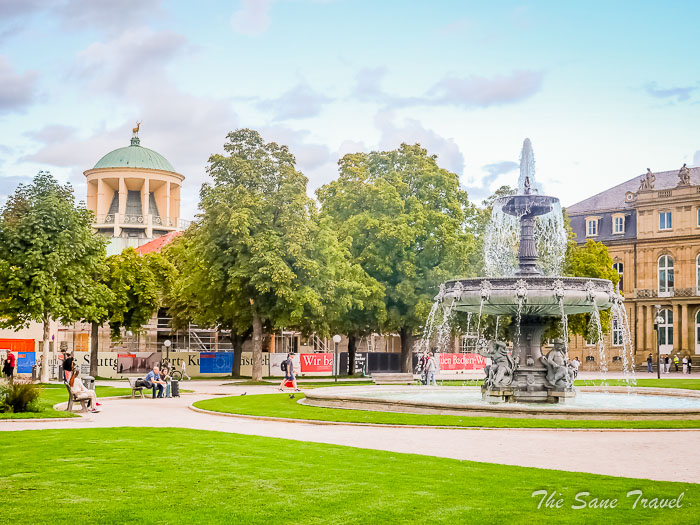
Wilhelma Zoo and Botanical Garden
Wilhelma Zoo and Botanical Garden offer both impressive collections and elements of 19th-century architecture. Wilhelma is one of the most beautiful of its kind in Europe. It was built in the middle of the 19th century for King Wilhelm I of Wurttemberg as a Moorish garden.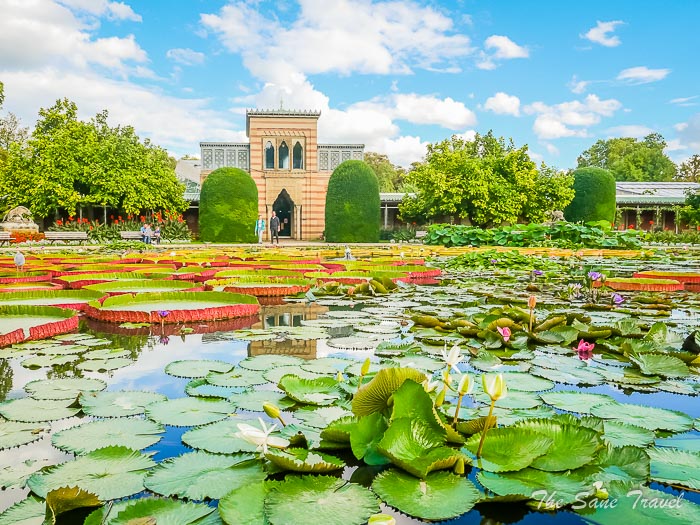
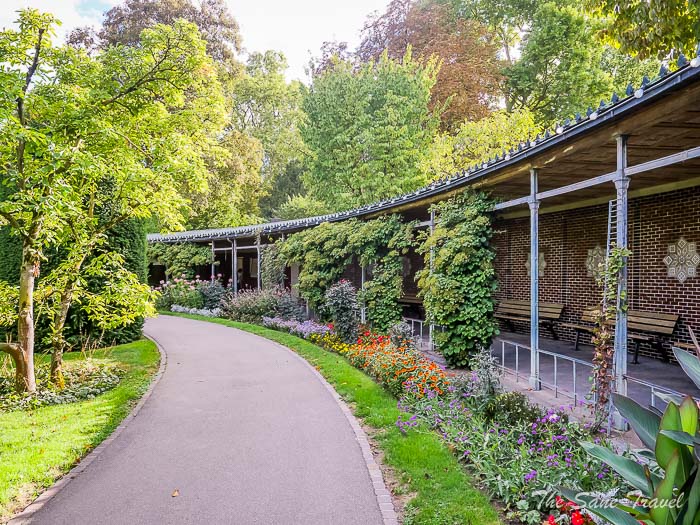
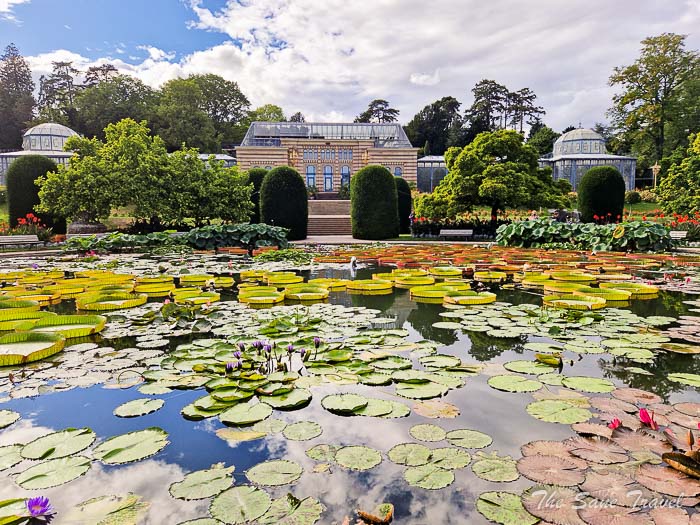
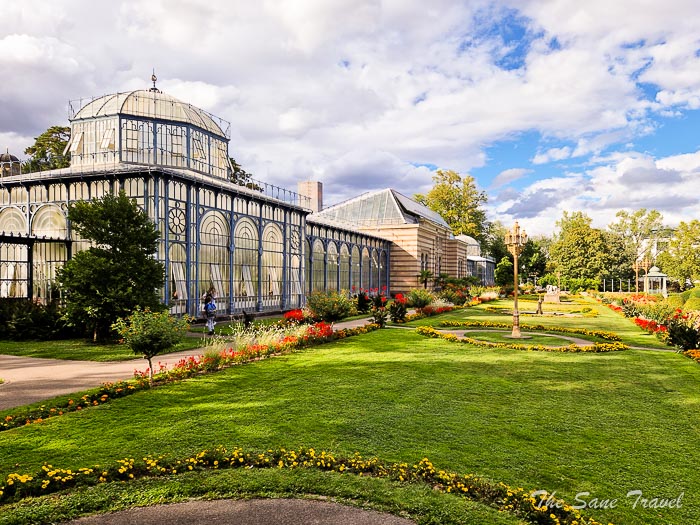 The zoological-botanical garden covers an area of about 30 hectares and features 11,500 animals representing 1,200 species and around 6,000 plants from all over the world.
The zoological-botanical garden covers an area of about 30 hectares and features 11,500 animals representing 1,200 species and around 6,000 plants from all over the world. 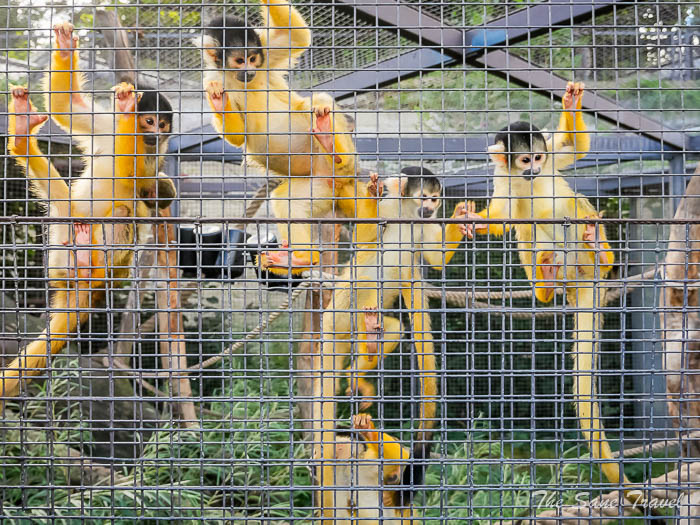
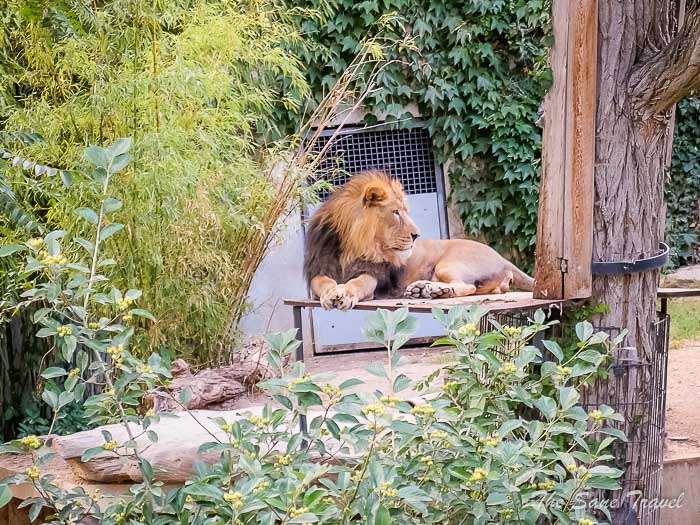 The zoo is well known for its accommodation of apes.
The zoo is well known for its accommodation of apes. 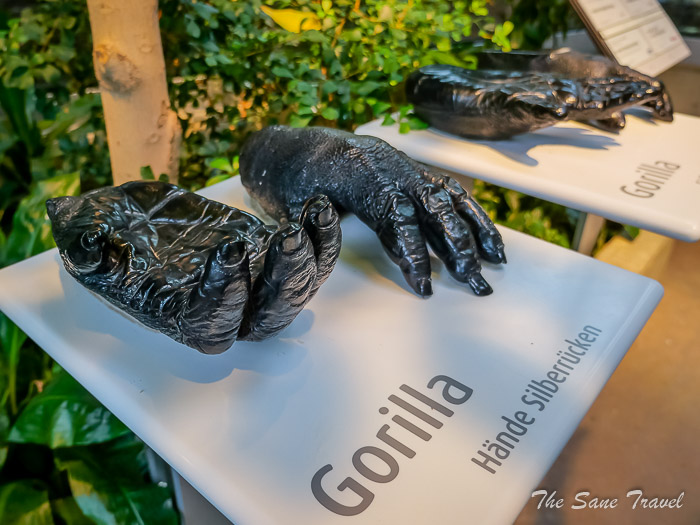
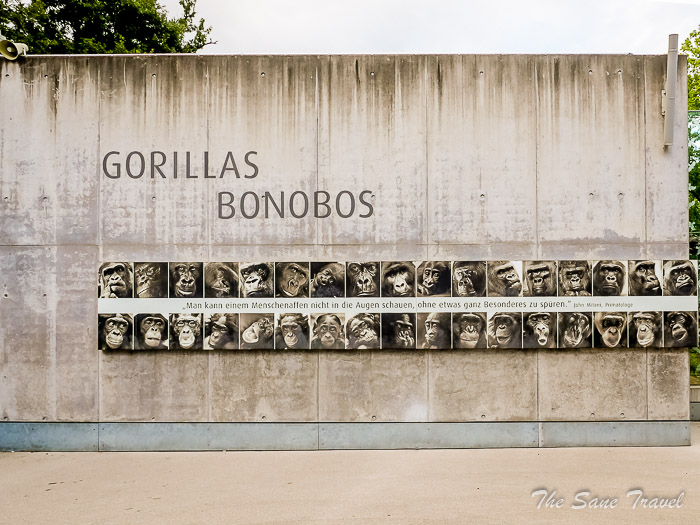 It is a place for visitors of all ages and is worth visiting every season. No wonder it is one of the most visited sites in Baden-Wurttemberg.
It is a place for visitors of all ages and is worth visiting every season. No wonder it is one of the most visited sites in Baden-Wurttemberg.
Stuttgart Library
Opened in 2011, the 9-storey Stuttgart City Library is very much the library for the modern era. The building has the form of a cube with an edge length of 45 metres. 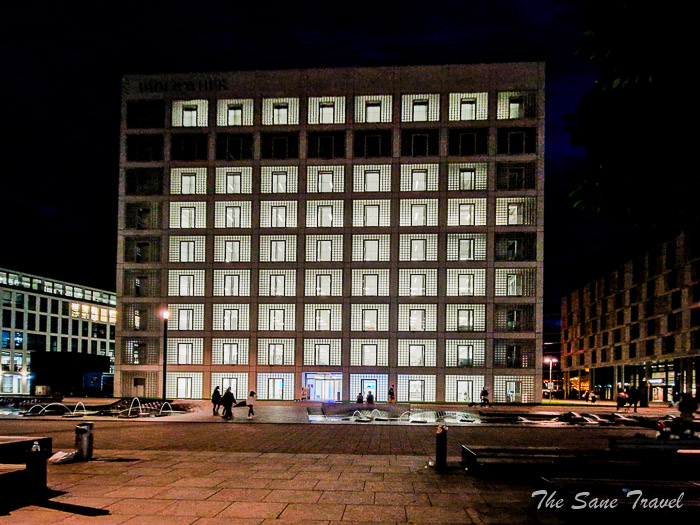 The building’s entrance was inspired by the “Cenotaph for Newton” by Étienne Boullée, though the structure’s interior draws influences from ancient pantheons. Its all-white inverted pyramid gallery hall lined with books is as white as the first snow making the library one of the city’s most photographed destinations. An all-white space gets its colours from kaleidoscopic bookshelves.
The building’s entrance was inspired by the “Cenotaph for Newton” by Étienne Boullée, though the structure’s interior draws influences from ancient pantheons. Its all-white inverted pyramid gallery hall lined with books is as white as the first snow making the library one of the city’s most photographed destinations. An all-white space gets its colours from kaleidoscopic bookshelves. 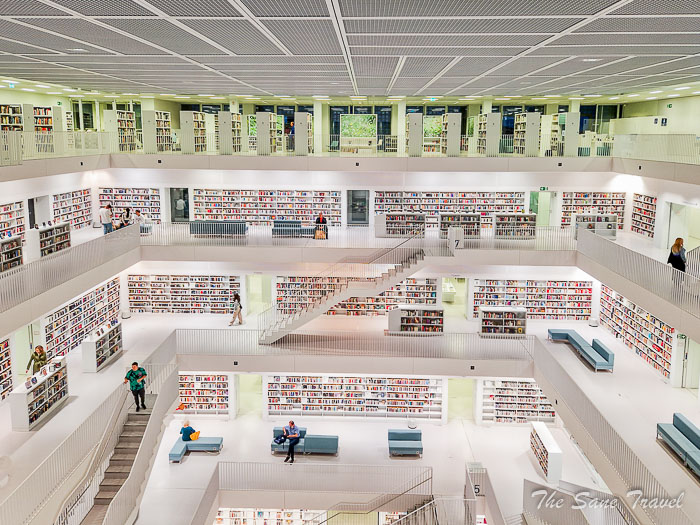
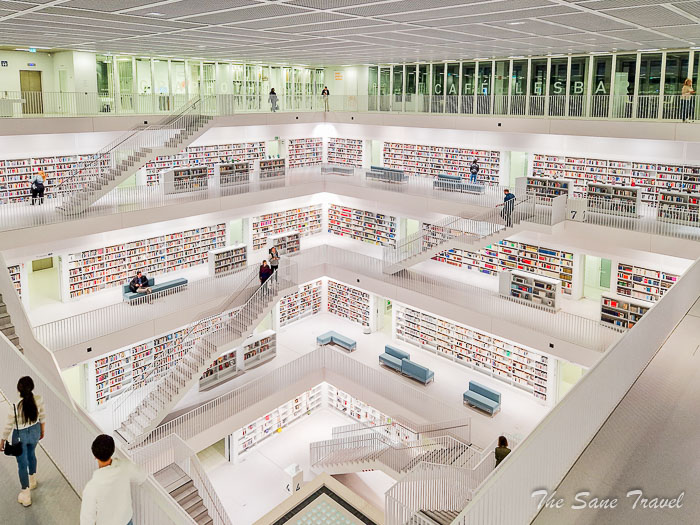
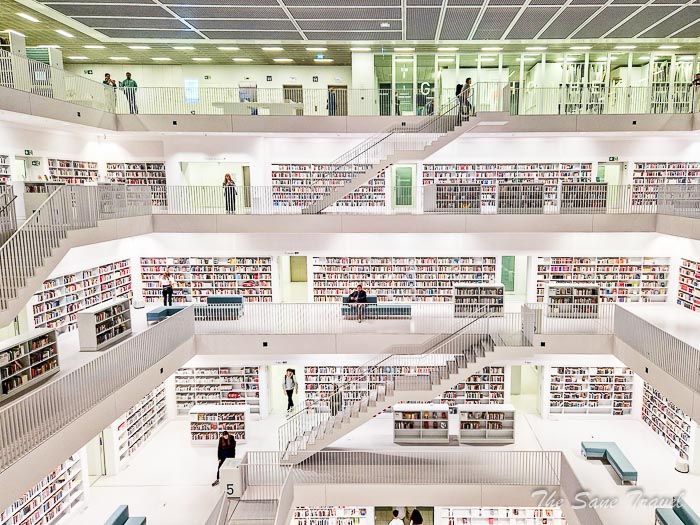
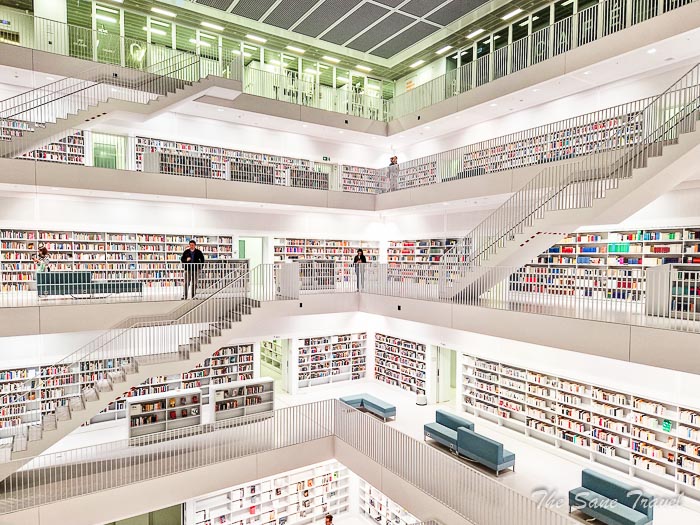 The individual areas of the library, with the central foyer, children’s library, music library, study rooms, Graphotheque, administration, and café, are arranged over the nine floors and enclosed by an accessible roof terrace with views over the town.
The individual areas of the library, with the central foyer, children’s library, music library, study rooms, Graphotheque, administration, and café, are arranged over the nine floors and enclosed by an accessible roof terrace with views over the town.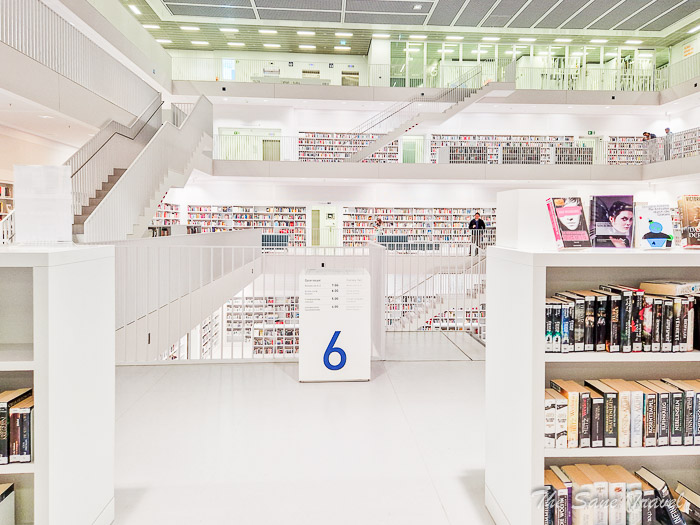
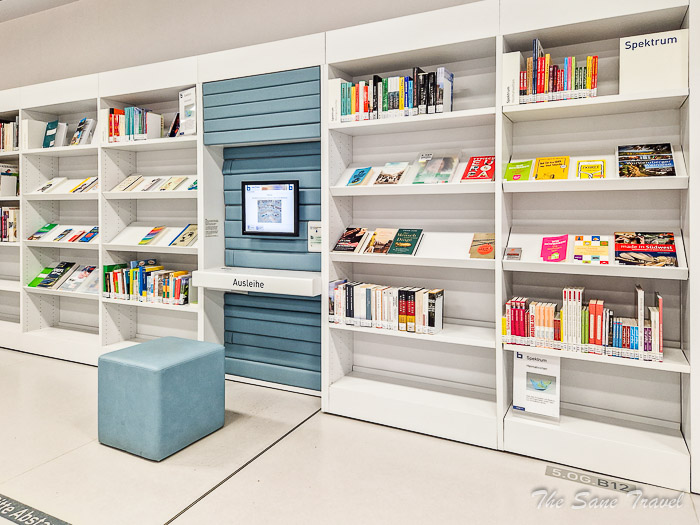
In order to see the library the way it is meant to be seen, go up to the fifth floor and walk up the stairs. Once you have reached the top, you can go through the cafe and up to the roof. The roof terrace is freely accessible and rewards you with a fantastic view!
Schlossplatz – Palace Square
Schlossplatz houses the baroque-style Neues Schloss (New Palace) and the medieval Altes Schloss (Old Palace), as well as beautiful fountains and various statues and sculptures. The square is beautifully designed around two fountains and the 30-metre high Anniversary Column with the goddess of harmony, Concordia, on the top.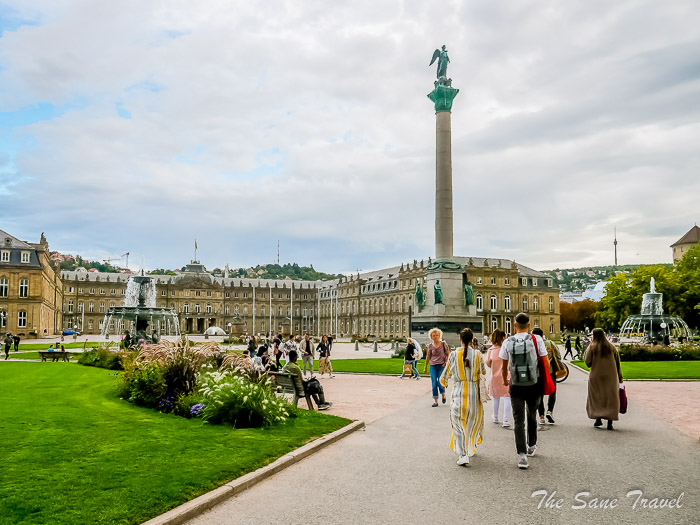

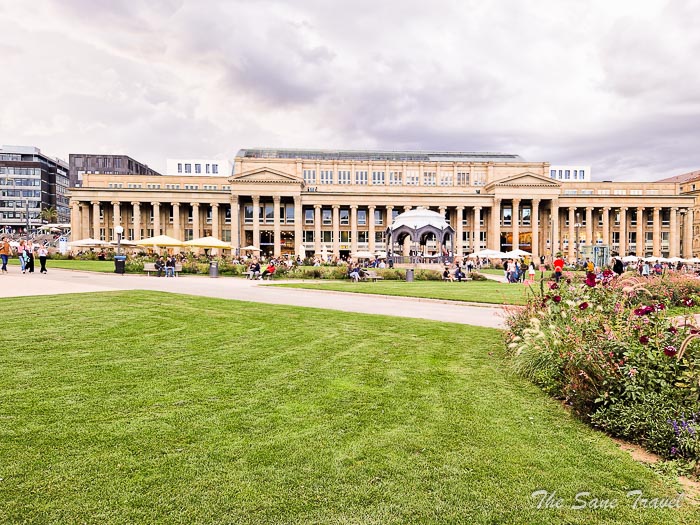 The Column was built on the occasion of the 25th anniversary of the reign of King William I von Wurttemberg in 1841. Stuttgart’s Stock Exchange, located in Schlossplatz, boasts a 135-metre high colonnade; its ground floor houses various cafes and shops and is a perfect place to relax and soak up the atmosphere. A variety of other attractions, such as the Stuttgart Art Museum, are dotted around the palace square. The area around the palace square is the longest continuous car-free pedestrian shopping zone in Europe – the 1.2-kilometre Königstrasse passes directly by the palace square and the Königsbau, Stuttgart's oldest shopping arcade.
The Column was built on the occasion of the 25th anniversary of the reign of King William I von Wurttemberg in 1841. Stuttgart’s Stock Exchange, located in Schlossplatz, boasts a 135-metre high colonnade; its ground floor houses various cafes and shops and is a perfect place to relax and soak up the atmosphere. A variety of other attractions, such as the Stuttgart Art Museum, are dotted around the palace square. The area around the palace square is the longest continuous car-free pedestrian shopping zone in Europe – the 1.2-kilometre Königstrasse passes directly by the palace square and the Königsbau, Stuttgart's oldest shopping arcade.
New Palace
Stuttgart New Palace was built by Duke Carl Eugen of Wurttemberg in the second part of the 18th century. He wanted Stuttgart to be a second Versailles. Originally built in the Baroque style, the New Palace was rebuilt after World War II. Today, the New Palace accommodates Ministries of Baden-Wurttemberg and representation rooms not open to the general public.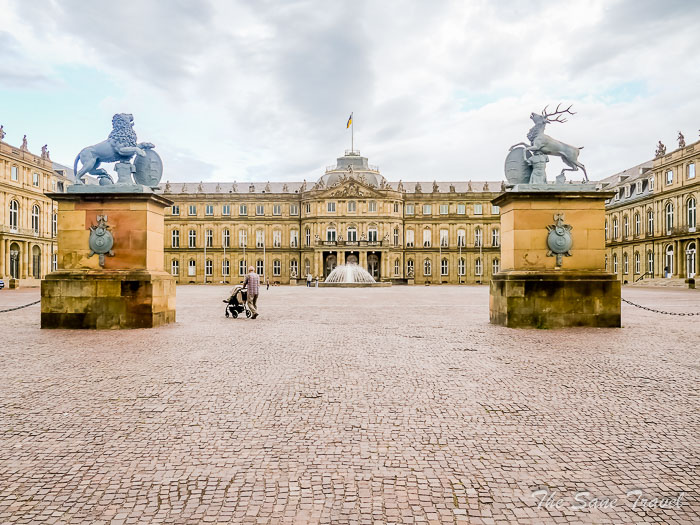
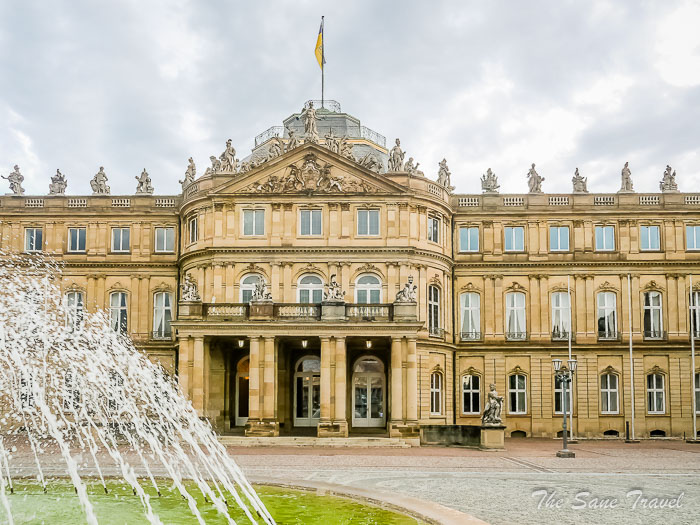
Old Castle
The Old Castle was built as a water fortress in the 10th century to protect the stud garden (which gave Stuttgart its name). After the counts of Wurttemberg moved their residence to Stuttgart in the 14th century, the fortress was enlarged according to the new function. In the middle of the 16th century, the old fortress was rebuilt into a magnificent renaissance palace. A bomb attack caused devastating damage to the castle in 1944. Its reconstruction was completed in 1962. Today, the castle facade is similar to what it was during the reformation period.
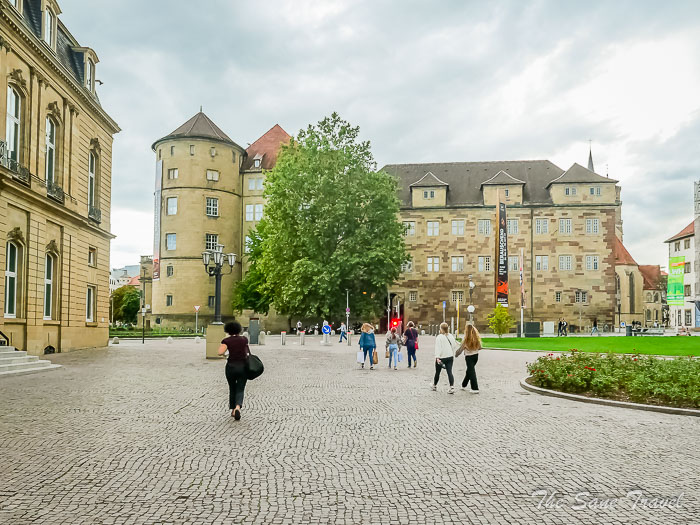
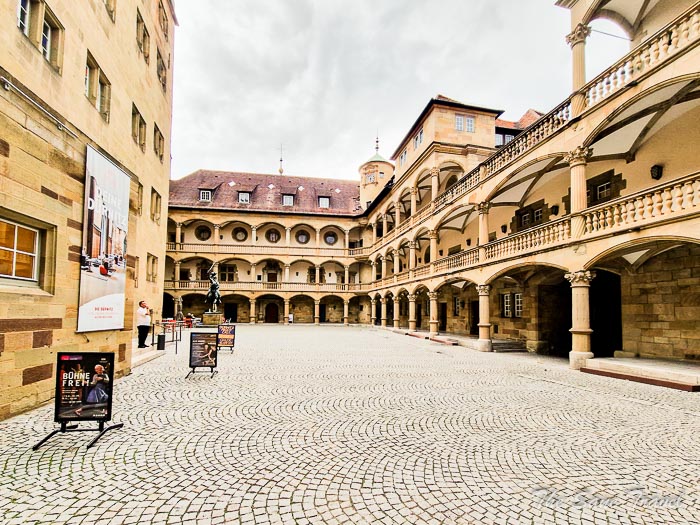
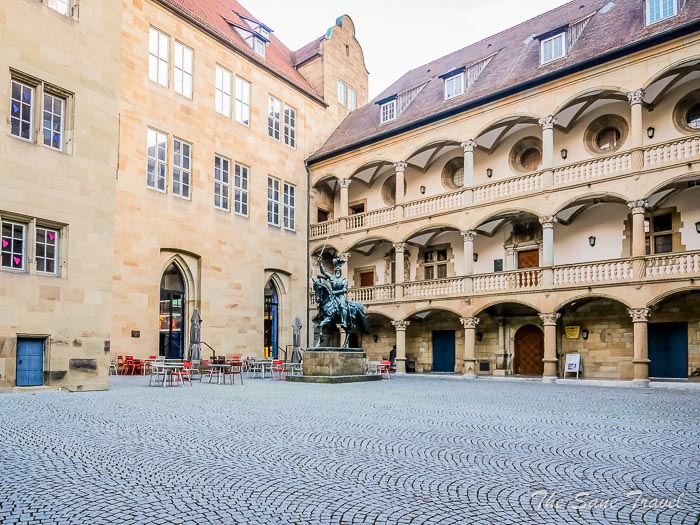 Nowadays, the Wurttemberg State Museum is located in the Old Castle. The museum places emphasis on displaying the history of the state.
Nowadays, the Wurttemberg State Museum is located in the Old Castle. The museum places emphasis on displaying the history of the state.
Market Hall
Stuttgart Market Hall is an architecturally impressive building. It is one of the most beautiful market halls in Germany. This Art Nouveau style building with reinforced concrete girders and a hall spanned by a glass roof was inaugurated in 1914. You can find fresh flowers, fish, meat, spice blows, vegetable and fruit there. 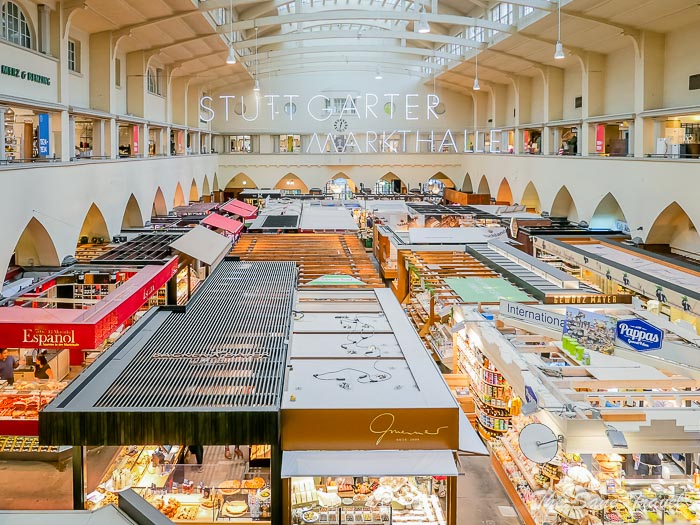
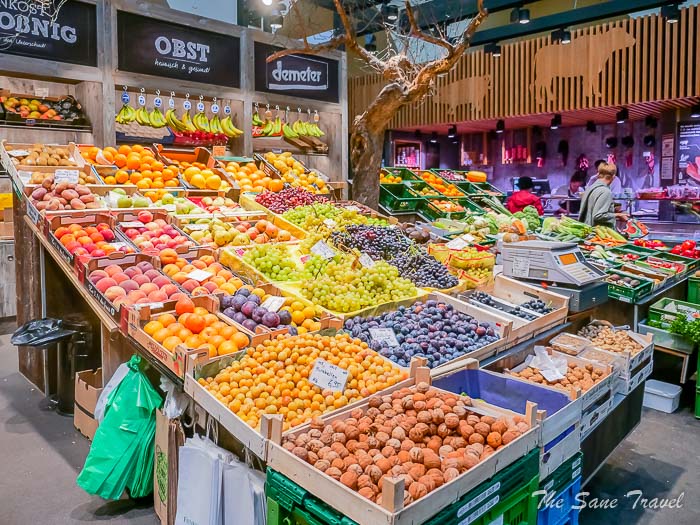 The Market Hall contains 44 different stalls. Have lunch at the "Marktstüble" restaurant, a meeting place for Swabians and guests from all over the world. Its menu is authentically Swabian.
The Market Hall contains 44 different stalls. Have lunch at the "Marktstüble" restaurant, a meeting place for Swabians and guests from all over the world. Its menu is authentically Swabian.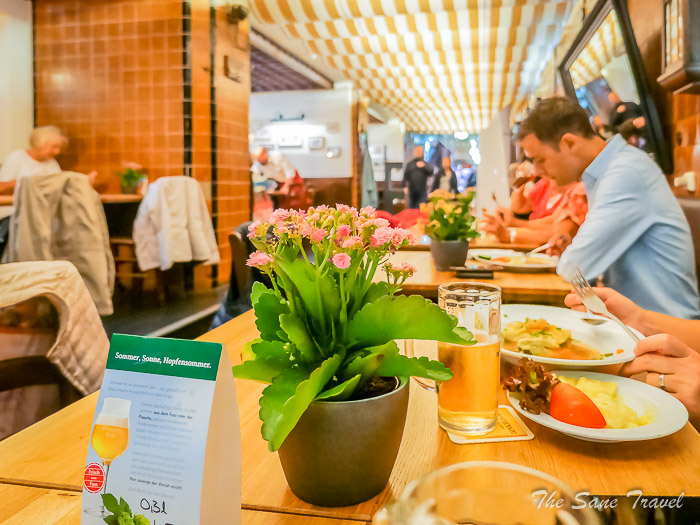
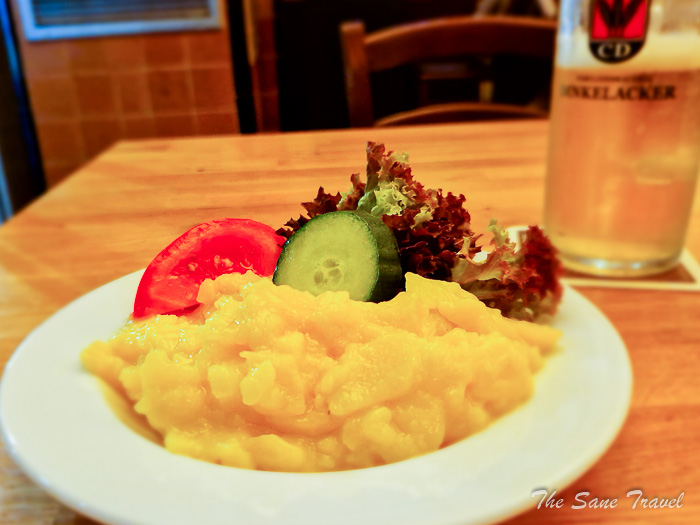
TV tower
The 217-metre high Television Tower of Stuttgart (Fernsehturm) with reinforced concrete structure was the first of its kind when it was opened in 1956. 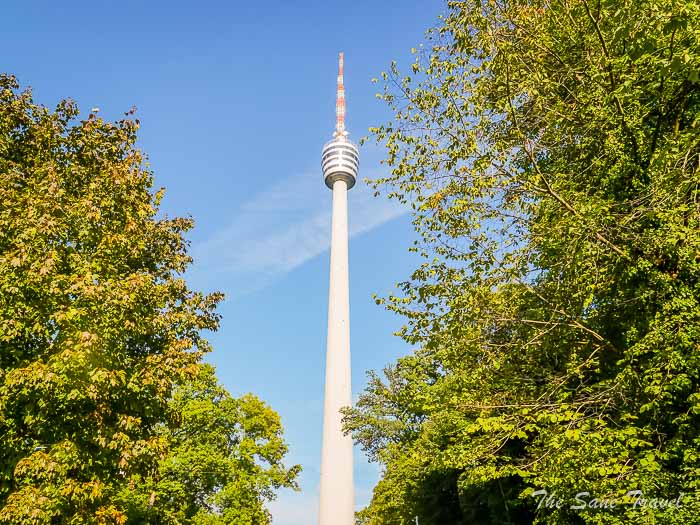 With its 150-metre high viewing platform, the Stuttgart Tower has become both a tourist site and a restaurant. The tower gives you an unforgettable view of downtown Stuttgart, the Swabian Alps, and the Black Forest.
With its 150-metre high viewing platform, the Stuttgart Tower has become both a tourist site and a restaurant. The tower gives you an unforgettable view of downtown Stuttgart, the Swabian Alps, and the Black Forest.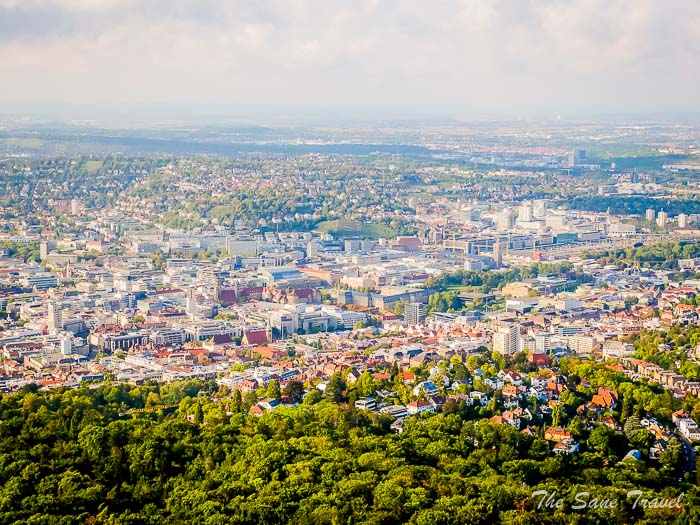
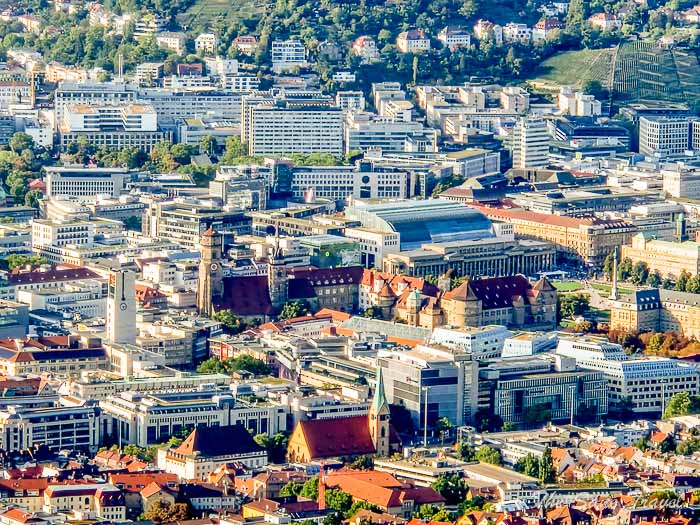
Solitude Palace
Built on a fantastic vantage point at the edge of Stuttgart, Solitude Palace offers a magnificent view across the Wurttemberg lowlands towards Ludwigsburg in the north. The Palace in the forests is the work of Duke Carl Eugen, who had a knack for constructing buildings. The Rococo Castle Solitude, which cannot hide its relationship with Sanssouci in Potsdam, was built in the second part of the 18th century. The stately Solitude Palace was a highly original pleasure palace and a royal display of power for official receptions and pompous festivities.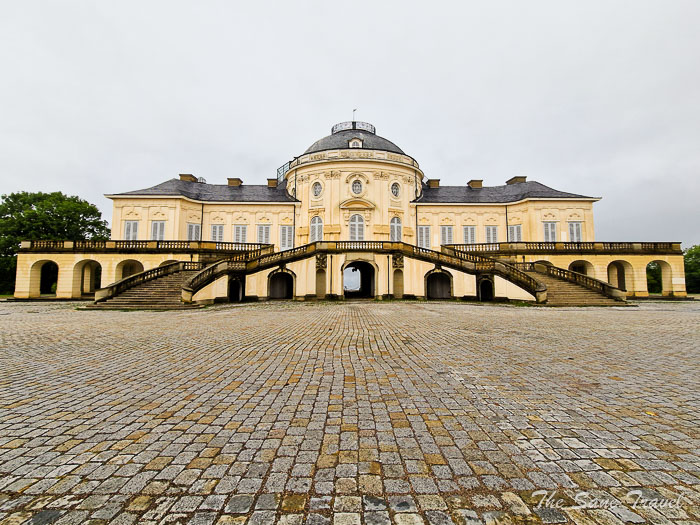
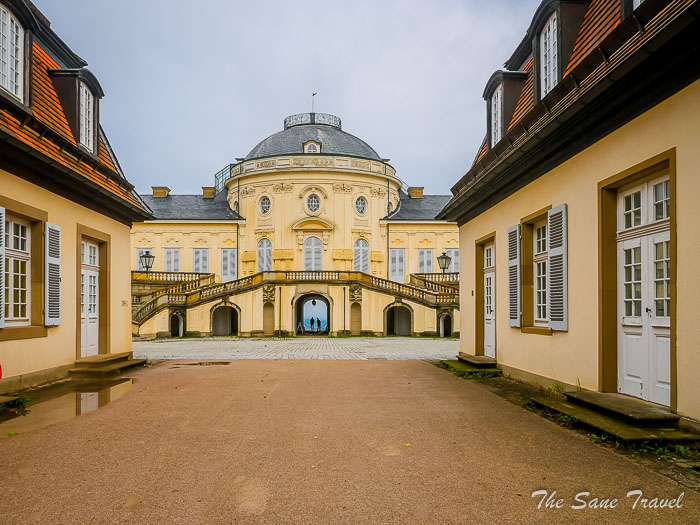
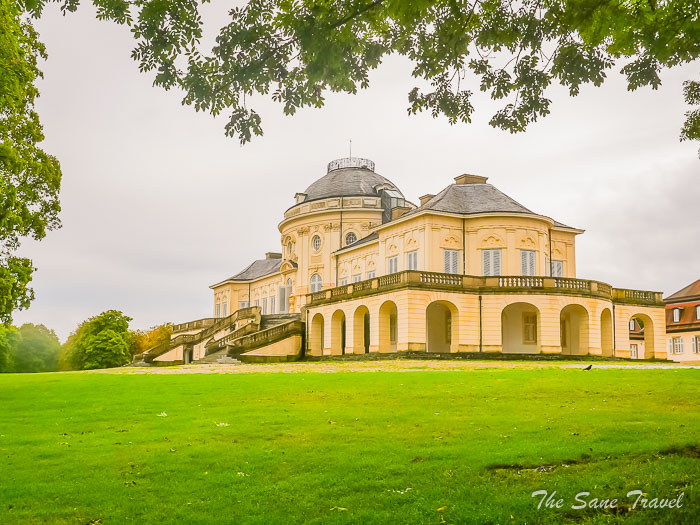 Duke Carl Eugen also commissioned the construction of 13 kilometres long Solitude Allee, connecting Solitude to Ludwigsburg Residential Palace. Parts of it are now a public footpath.
Duke Carl Eugen also commissioned the construction of 13 kilometres long Solitude Allee, connecting Solitude to Ludwigsburg Residential Palace. Parts of it are now a public footpath.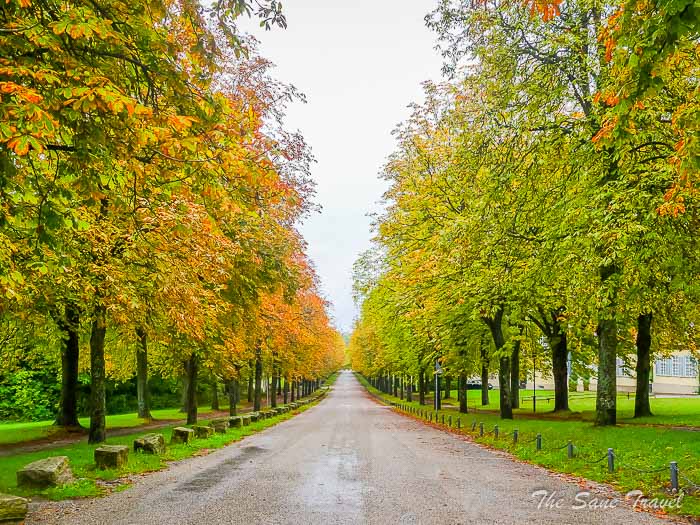
The interior of the palace radiates splendour and is designed in the late Rococo and early Neoclassical styles. Its highlight is the White Hall beneath the domed roof. Since 1990, Akademie Schloss Solitude (Solitude Palace Academy), an institution that supports young artists, has been located in one of the site’s buildings. Be aware that you can visit the interiors of the palace only with German speaking guided tour.
Murals at Nordbahnhof
When travelling from Nordbahnhof station, allow some time to admire colourful artworks made by Jeroo or Christoph Ganter. Christoph Jeroo Ganter is a sports and English teacher who is one of the most famous street artists in the world. Jeroo has helped to shape public space in Stuttgart with his murals. He painted, among other things, the S-Bahn stations Nordbahnhof and Sommerrain and the Max-Eyth-Schule on Berliner Platz.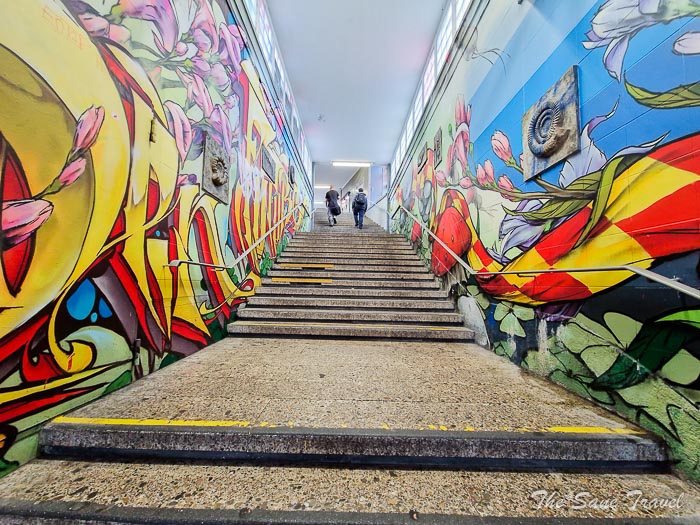

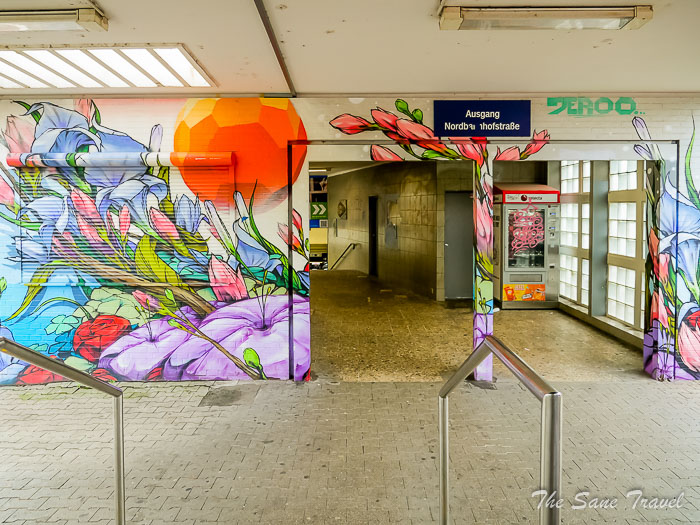
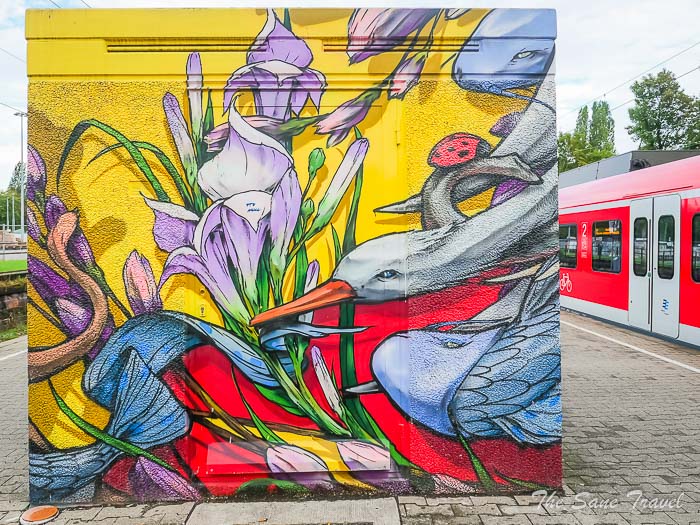
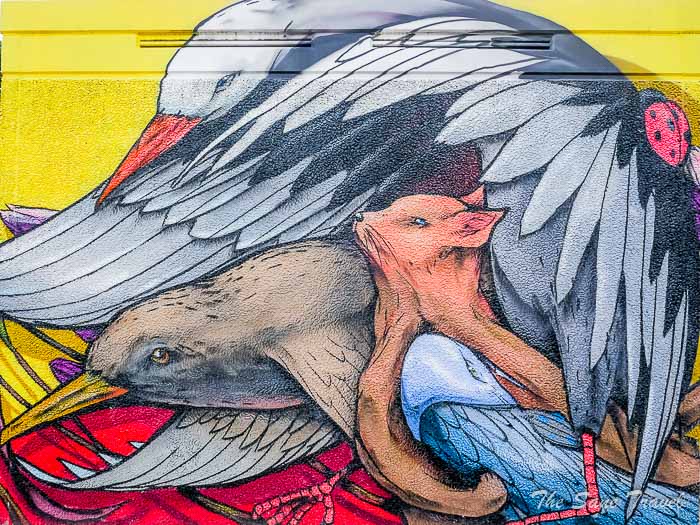
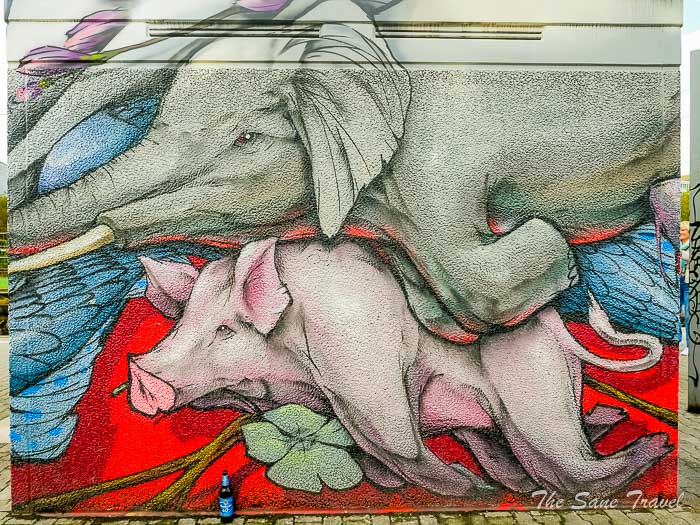
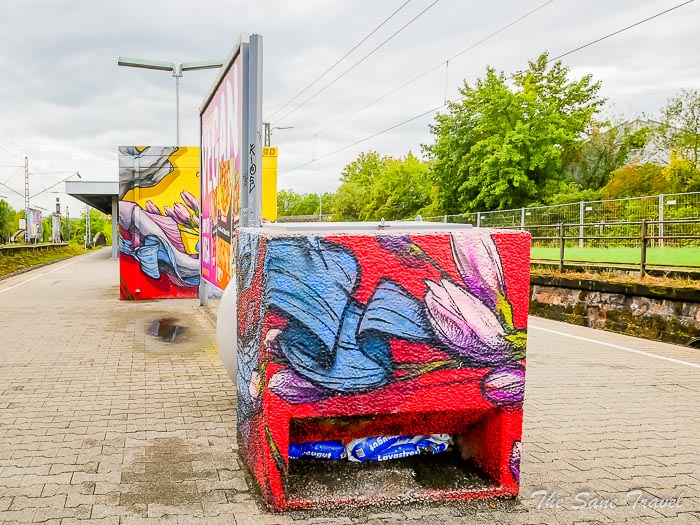
Other sights
You can visit Mercedes-Benz and Porsche museums and Killesberg Park, but I did not have a chance to see them.
Where to stay
I recommend a 3.5-star Hampton by Hilton Stuttgart City Centre located in the heart of Stuttgart-Mitte. All guest rooms have laptop workspace, air conditioning and LCD TVs with premium channels. 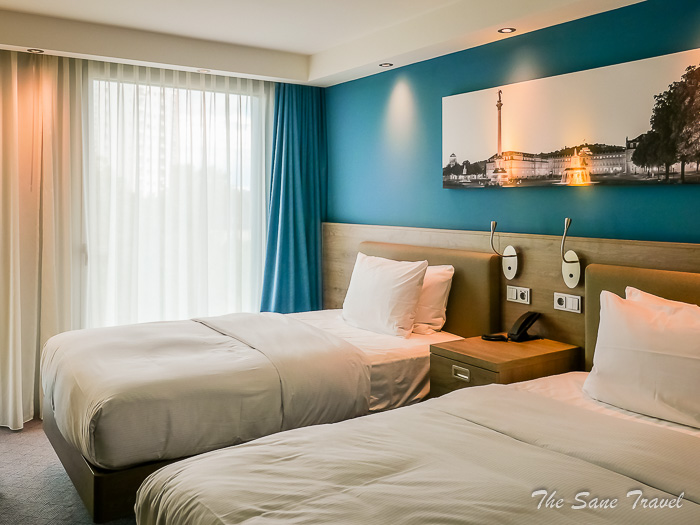 Guests can enjoy additional amenities such as a bar and 24-hour fitness and business centres. The hotel is located next to the Milaneo shopping centre with over 200 shops and restaurants. A light rail station is steps away from the hotel.
Guests can enjoy additional amenities such as a bar and 24-hour fitness and business centres. The hotel is located next to the Milaneo shopping centre with over 200 shops and restaurants. A light rail station is steps away from the hotel. 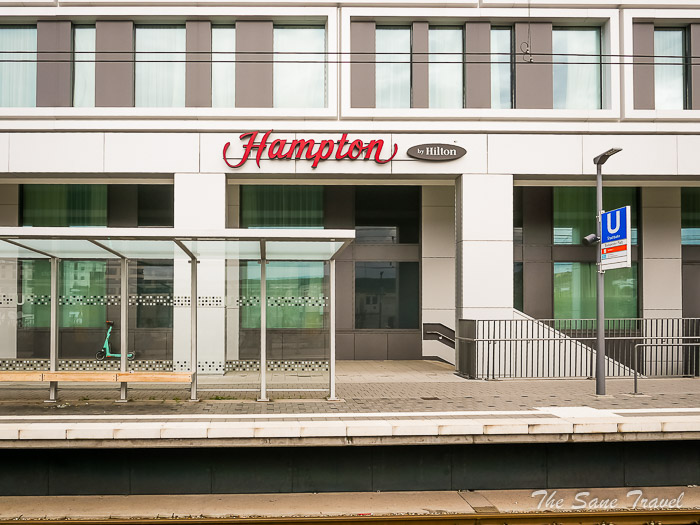 It takes only seven minutes to get to Schlossplatz from the station. Breakfast and Wi-Fi are included in your stay.
It takes only seven minutes to get to Schlossplatz from the station. Breakfast and Wi-Fi are included in your stay.
Practical information
Check out my tips for visiting Stuttgart and Baden-Wurttemberg to save your money and time.
Like it? Pin It!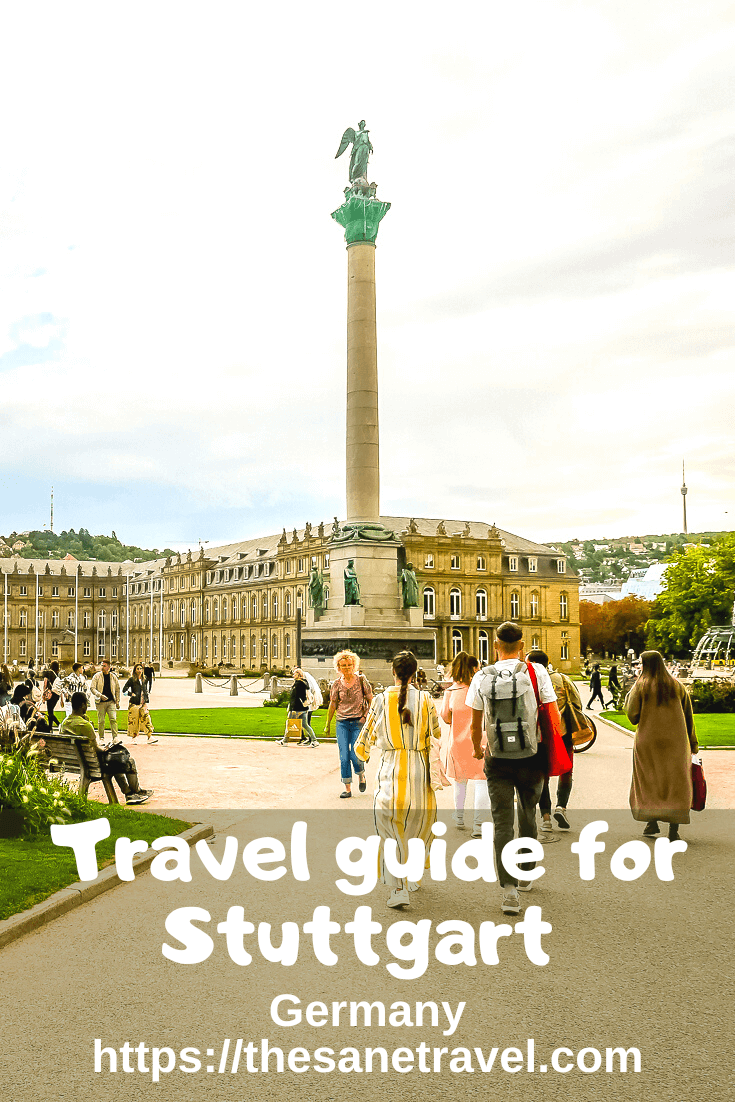
What did you think? How you visited Stuttgart? I’d love to hear from you so please add your comment below.
Author: Anita Sane

About the author
Anita is a part-time traveller, passionate photographer and a retired career woman from Latvia, travelling mostly solo for more than 15 years. She is a skilled travel planner who plans and executes her travels by herself. Anita wants to show you how to travel the world and open your mind to new experiences. Follow her on Facebook, Instagram, Pinterest, Twitter and Bloglovin.

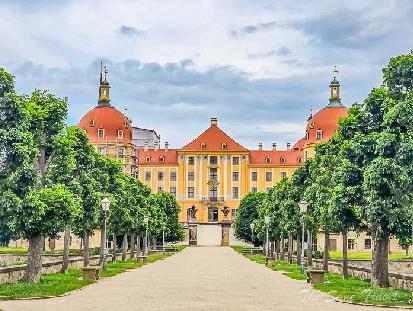
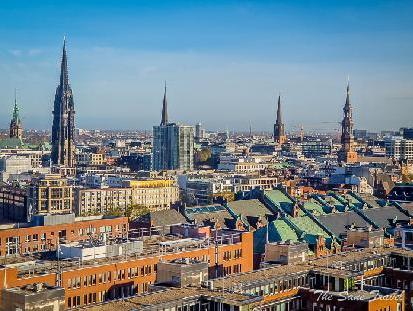
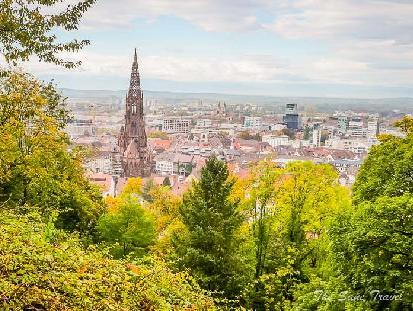
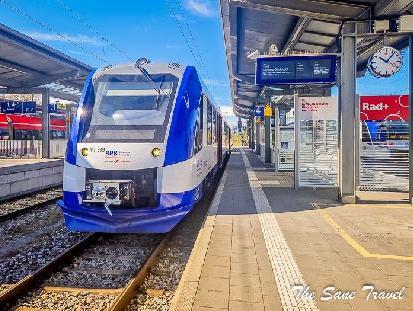
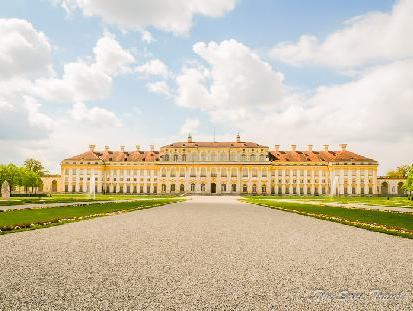
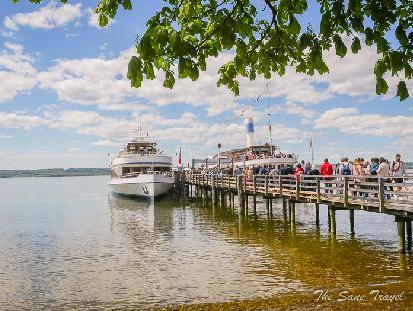
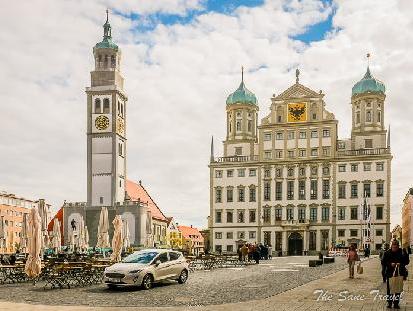
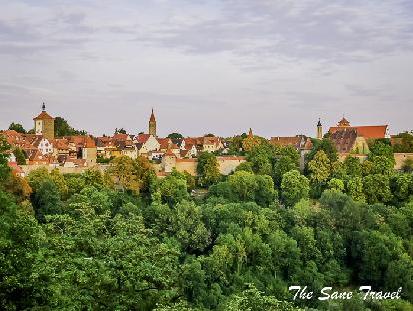
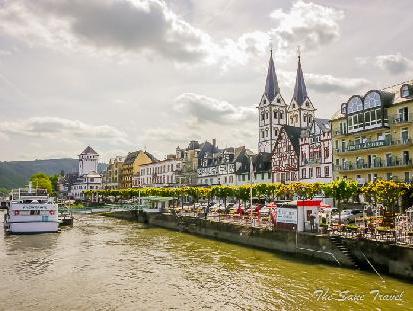
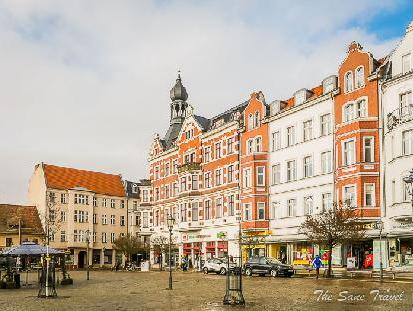
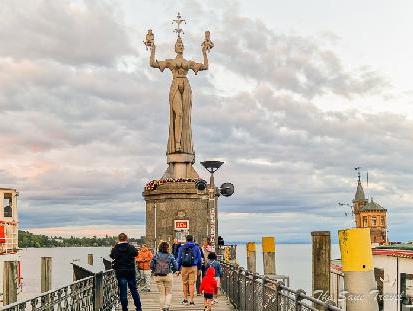
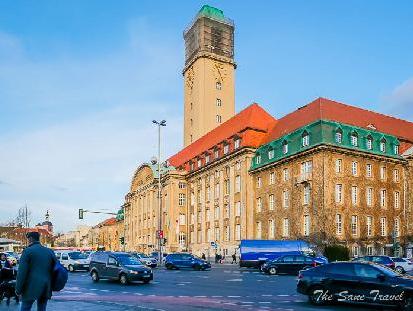

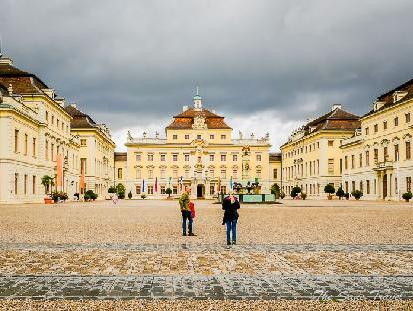
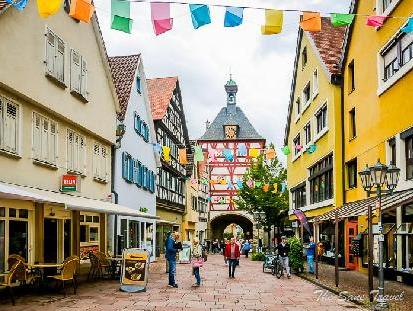
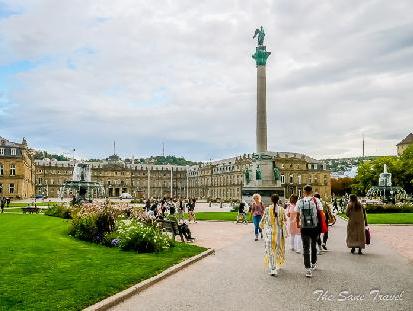

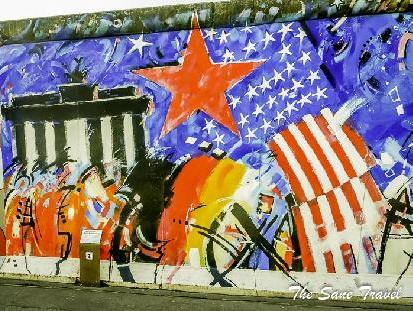
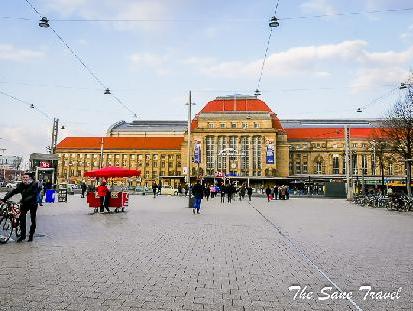
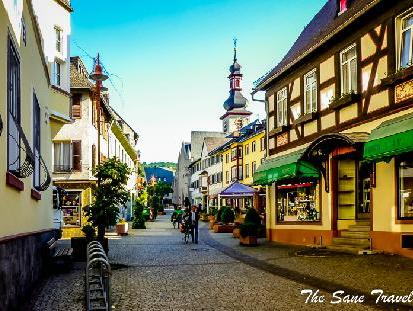
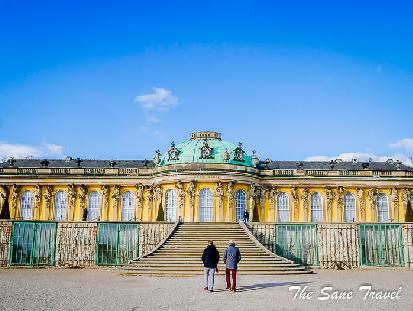
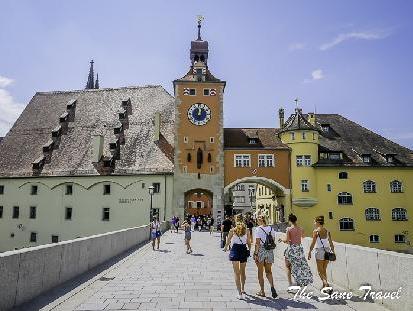
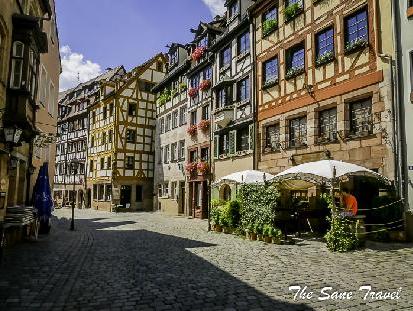
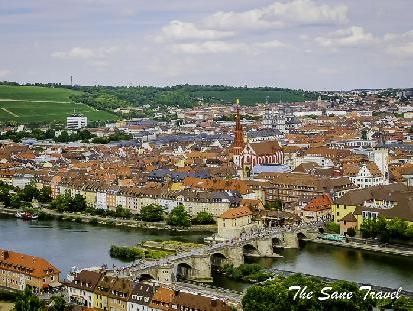
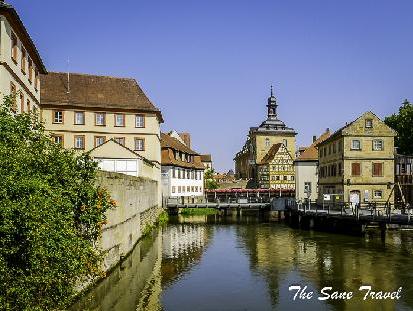
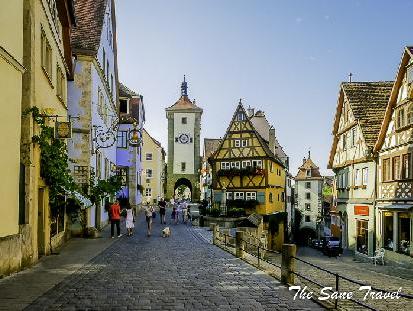
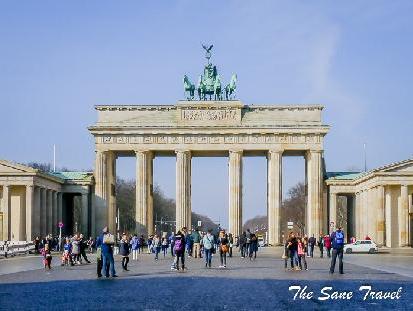
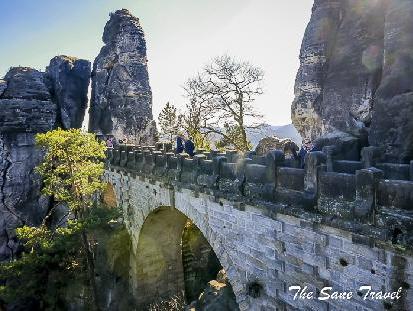
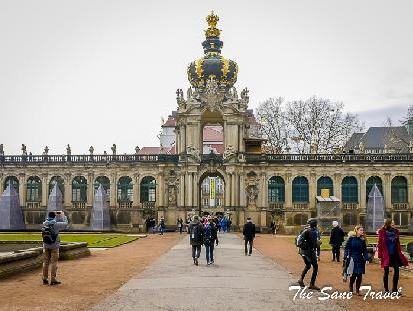
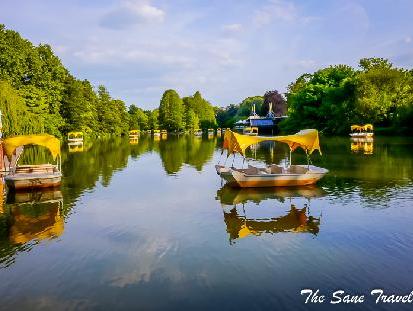
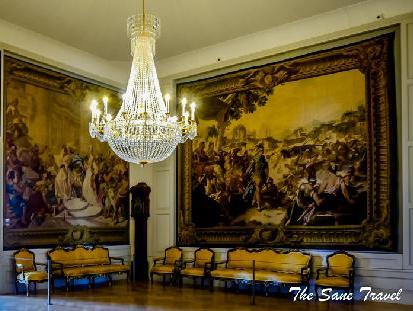
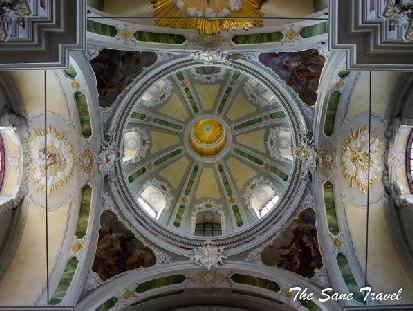
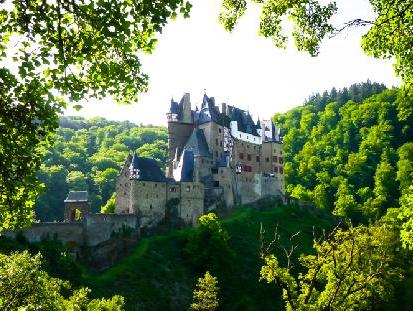
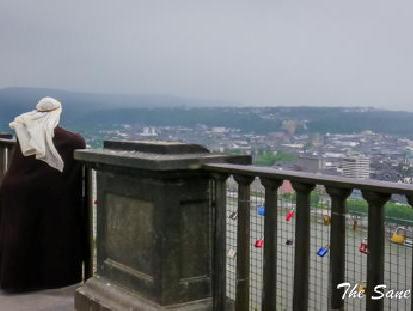
Report
My comments